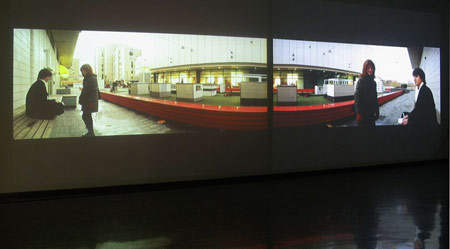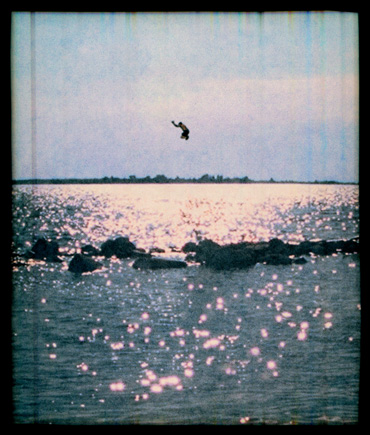I.G., Gerhard Richter
This work of Richter’s is a ‘photo-painting’ of his second wife, Isa Genzken. Richter has produced many such ‘photo-paintings’, made using a multi-step process of representations. He starts with a photograph and projects it onto his canvas, where he traces its form. Taking his colour palette from the photograph, he paints to replicate the look of the original picture. Richter’s hallmark ‘blur’ is a result of this process; it is the blurring of the boundary between photographic representation and the painterly art.
© Gehard Richter
The Naked Portrait is a bold and innovative exhibition which sets out to explore the genre of naked portraits, looking at nearly 200 works from 1906 to 2006. The exhibition takes place across two floors of the Scottish National Portrait Gallery and explores the many ways in which artists have drawn, painted, printed, sculpted and photographed the naked body.
The show will feature a selection of works, including photography and painting, by a wide range of artists. From well-known figures such as Egon Schiele, Lucian Freud, Diane Arbus, Gilbert & George and Tracey Emin to lesser-known photographers and painters; as well as famous sitters including Marilyn Monroe, Rudolf Nureyev and John Lennon. »
Jane Birkin, David Bailey
The infamous photographer David Bailey had a strong presence in ‘swinging’ 1960s London, socialising with and photographing such iconic figures as the Beatles and the Kray Twins. Such was Bailey’s notoriety that he inspired David Hemmings performance in the 1966 film Blowup.
Jane Birkin originally came to the public’s attention by starring in Blowup. This photograph was taken in 1969, three years following the film’s release, and the same year in which her popular duet with Serge Gainsbourg, Je T’aime…Moi Non Plus, was released. The portrait is typical of Bailey’s close-up style that became common practice in portrait and fashion photography.
© David Bailey
My Mother and I, Elinor Carucci
Many of Elinor Carucci’s photographs are realistic portrayals of intimate scenes, often between family members. Through her camera, intensely private scenes are captured and then presented to the public.
My Mother and I is typical of Carucci’s photographic realism; the skin blemishes are clearly visible and the unconventional framing of the two women prevents the work from appearing staged. The physical interaction between mother and daughter is the real subject here: a seemingly close bond contradicted by an awkward gesture, a wedding ring and the white space between them.
© Elinor Carucci/ Courtesy Edwin Houk Gallery, New York
Human Toilet II, Sarah Lucas
Sarah Lucas was initially associated during the 1990s with the Young British Artists (YBAs). Her series titled Self-Portraits, 1990-1998, from which this work is taken, often uses humour and colloquial vocabulary to parody commonly understood metaphors for private activities and sexual behaviour.
The title of this work, Human Toilet II, brings to mind unsavoury connotations and jars comically with the image of Lucas sat holding a cistern tank.
© Sarah Lucas courtesy Sadie Coles HQ, London
Red Turning, Jemima Stehli
In her works over the past few years, Jemima Stehli appears in the work itself, as subject or object, most often as both. She often appropriates iconic imagery from existing, often clichéd, stylistic genres such as fashion photography.
In Red Turning, the artist/model is dressed only in glossy red stilettos with her back to us. She looks slightly ridiculous, her head twisted, her hair like an advert for shampoo. However, it is Stehli who chooses her moment, who takes the picture, who objectifies herself.
© Courtesy of the artist and the Lisson Gallery, London
The Beginning, David Hockney
This is taken from a series of etchings inspired by the poems of Constantine P Cavafy (1863-1933), one of modern Greece’s most eminent poets. A homosexual, Cavafy had to keep his sexuality hidden; his poetry often recounts fleeting encounters and the reliving of such experiences through memory.
The Beginning depicts two of Hockney’s friends in London. Its sparse execution echoes the economy of Cavafy’s poetic style. The men are drawn with simplicity, tenderness and undercharged eroticism.
© David Hockney
The Naked Portrait
6th June to 2nd September 2007
gallery
via












































